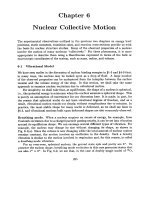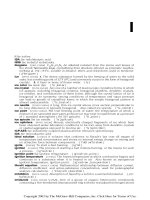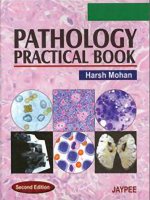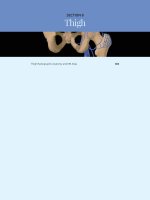Ebook Pediatric drug doses (2nd edition): Part 1
Bạn đang xem bản rút gọn của tài liệu. Xem và tải ngay bản đầy đủ của tài liệu tại đây (514.45 KB, 130 trang )
PEDIATRIC
DRUG DOSES
U
t
i
n
d
e
G
R
V
U
t
i
n
d
e
G
R
V
PEDIATRIC
DRUG DOSES
G
R
V
Second Edition
d
e
GL Chattri
MBBS MD MHA
Consultant Pediatrician and Neonatologist
Mahakoushal Hospital
Seth Mannulal Hospital
Sanjeevan Hospital
154, Tamarhai Chowk, Kotwali Ward
Jabalpur, Madhya Pradesh, India
t
i
n
U
®
JAYPEE BROTHERS MEDICAL PUBLISHERS (P) LTD
New Delhi • Panama City • London
®
Jaypee Brothers Medical Publishers (P) Ltd.
Headquarter
Jaypee Brothers Medical Publishers (P) Ltd
4838/24, Ansari Road, Daryaganj
New Delhi 110 002, India
Phone: +91-11-43574357
Fax: +91-11-43574314
Email:
G
R
V
Overseas Offices
J.P. Medical Ltd.,
83 Victoria Street London
SW1H 0HW (UK)
Phone: +44-2031708910
Fax: +02-03-0086180
Email:
Jaypee-Highlights Medical Publishers Inc.
City of Knowledge, Bld. 237, Clayton
Panama City, Panama
Phone: 507-317-0160
Fax: +50-73-010499
Email:
d
e
Website: www.jaypeebrothers.com
Website: www.jaypeedigital.com
t
i
n
© 2012, Jaypee Brothers Medical Publishers
All rights reserved. No part of this book may be reproduced in any form or by any
means without the prior permission of the publisher.
Inquiries for bulk sales may be solicited at:
This book has been published in good faith that the contents provided by the author
contained herein are original, and is intended for educational purposes only. While
every effort is made to ensure a accuracy of information, the publisher and the author
specifically disclaim any damage, liability, or loss incurred, directly or indirectly, from
the use or application of any of the contents of this work. If not specifically stated, all
figures and tables are courtesy of the author. Where appropriate, the readers should
consult with a specialist or contact the manufacturer of the drug or device.
U
Publisher: Jitendar P Vij
Publishing Director: Tarun Duneja
Cover Design: Seema Dogra
Pediatric Drug Doses
First Edition
: 2010
Second Edition : 2012
ISBN 978-93-5025-505-6
Printed at
G
R
V
Dedicated to
d
e
In the memory of
late (Prof) Dr VJ Rajpoot Sir (Indore),
who taught me the art of pediatrics
U
t
i
n
U
t
i
n
d
e
G
R
V
Preface to the Second Edition
Welcome to this edition of the Pediatric Drug Doses. Tradition
of this publication began in 2009. I am very thankful to all
who accepted and appreciated my first edition. In this
edition existing drugs are updated, few drugs are omitted
and many more new drugs are added. Quick reference chart
for IV medication and administering medication to children
had been included which will be very helpful practically to
young residents, doctors and practicing pediatricians. I have
tried to retain the format of the previous edition to avoid
new feeling and shall continue to enjoy the same patronage
of the reading in this edition.
U
t
i
n
d
e
G
R
V
GL Chattri
U
t
i
n
d
e
G
R
V
Preface to the First Edition
I am pleased to have the opportunity to write this first
edition of Pediatric Drug Doses. It is not intended to compete
with the already well-established books. This book is
designed to be a practical and convenient guide to the
dosing and usage of medications in children.
Pediatric doses vary with the age, weight, surface area
and disease, etc. Overdosing may lead to side effects and
under-dosing will lead to unsatisfactory response or
development of resistance in cases of antibiotics.
I did not confine myself to doses only, but expended to
provide indications which is a must before knowing doses,
and also included the information such as size of feeding
tubes, Foley's catheters, endotracheal tubes, laryngoscope
blades, oxygen mask according to age and weight;
approximate weight and surface area charts; fluid
resuscitation formula for burn patients; so that residents
do not have to consult too many books while dealing with
patients bedside. The aim is to improve the practical utility
of the book.
I have made all efforts to check for any mistakes in the
text and drug doses, but nobody can be perfect. If you are
in any doubt about a treatment or drug doses, always check
with another formulary. Due to constant research, it is
advised to consult package insert especially for infrequently
used drugs and drugs with narrow therapeutic index.
I have written this book for pediatric house officers and
registrars particularly keeping in mind but it will also be
useful for consultant practicing pediatricians.
d
e
t
i
n
U
G
R
V
GL Chattri
U
t
i
n
d
e
G
R
V
Acknowledgments
First of all I would like to thank my wife Rashmi and my
kids Dhruv and Shlok who spare me to spend, from their
share of valuable time in writing this book. She was always
encouraging me to make my dream come true.
I sincerely thank Mr Bhoopesh Arora, M/s Jaypee Brothers
Medical Publishers (P) Ltd, New Delhi, India and their staff
for publishing this book. I would like to thank Mr Sanjeev
Pandey for his professional and personal support.
I am thankful to Dr Sameer Agarwal and Dr Mahesh
Maheshwari for useful suggestions for the book. I sincerely
thank Shri Jitendar P Vij (Chairman and Managing Director),
M/s Jaypee Brothers Medical Publishers (P) Ltd, New Delhi,
India to publish the book.
Last but not least, I would like to thank Dr Sharad Thora,
Dr Hemant Jain, Dr Mahesh Meheswari, Dr Sameer
Agarwal, Dr Nivedita Kapoor for their guidance and
support.
U
t
i
n
d
e
G
R
V
U
t
i
n
d
e
G
R
V
Structure of the Book
All the drugs are listed in their respective group and are
covered in short to make the book user-friendly. Drug
information is presented in a consistent format and provides
the following:
Generic Name: Indian adopted name.
Uses: Information pertaining to appropriate indications or
use of the drug.
Usual Dosages: The amount of drug to be typically given
or taken during therapy in general and in certain specific
conditions. For selected drugs, the dosing adjustment in
renal and/or hepatic impairment should be made
accordingly.
Brand Names: Common trade names available in India.
Combinations: If any.
So, if one has reached to the final or probable diagnosis,
then this book will provide the remaining information—
drugs which can be prescribed, dosages, brands and forms
available, and mode of administration.
U
t
i
n
d
e
G
R
V
U
t
i
n
d
e
G
R
V
Contents
1.
2.
3.
4.
5.
6.
7.
8.
9.
10.
11.
12.
13.
14.
15.
16.
17.
18.
19.
20.
21.
22.
23.
24.
25.
Analgesics .................................................................... 1
Antiasthmatics .......................................................... 11
Antiarrhythmics ........................................................ 17
Antibiotics .................................................................. 21
Anticoagulants .......................................................... 56
Antidepressants ........................................................ 58
Antidotes/Poisoning ............................................... 61
Antiemetics ................................................................ 67
Antiepileptics ............................................................ 71
Antifungals ................................................................ 82
Antigout Agents ....................................................... 87
Anthelmintics ............................................................ 89
Antihistamines .......................................................... 94
Antihypertensives .................................................... 98
Antileprotics ............................................................ 106
Antimalarials ........................................................... 107
Antimyasthenics ..................................................... 112
Antiprotozoals ........................................................ 114
Antipsychotics/Anxiolytics/Sedatives .............. 117
Antiretrovirals ......................................................... 120
Antitubercular ......................................................... 125
Antispasmodics ....................................................... 128
Antitoxins ................................................................ 130
Antiulcers/Antisecretory ...................................... 132
Antivirals ................................................................. 134
U
t
i
n
d
e
G
R
V
xvi
26.
27.
28.
29.
30.
31.
32.
33.
34.
35.
36.
37.
38.
39.
40.
41.
42.
43.
44.
45.
46.
Pediatric Drug Doses
Cardiac Shocks and Failures ................................. 140
Chelating Agents .................................................... 142
Colony Stimulating Factors .................................. 144
Corticosteroids ........................................................ 146
Diuretics ................................................................... 151
Drugs Used for Controlling Bleeding ................. 155
Electrolyte Supplements and
Fluid Replacements ................................................ 157
H2 Antagonists ........................................................ 161
Immunoglobulins ................................................... 162
Laxatives/Stool Softeners ..................................... 166
Minerals .................................................................... 168
Nutritional Supplements ....................................... 170
Pituitary Hormones ................................................ 173
Plasma Volume Expanders ................................... 175
Scabicidal Agents .................................................... 177
Skeletal Muscle Relaxants ..................................... 178
Sympathomimetics ................................................. 180
Thyroid and Antithyroid Agents ......................... 183
Vaccines .................................................................... 185
Vasodilators ............................................................. 190
Vitamins ................................................................... 191
d
e
t
i
n
U
G
R
V
Miscellaneous Drugs ................................................ 197
Appendices ................................................................. 209
Index ................................................................................... 219
Symbols and Abbreviations
ADHD
AEDs
AIDS
AOM
APTT
BA
BD
CHF
CMV
CNS
CSF
DCL
DM
DIC
ET
E/E
g
G6PD
GERD
GI
h/hr
HSV
HT
ICP
ID
Attention Deficit Hyperactivity Disorder
Antiepileptic Drugs
Acquired Immunodeficiency Syndrome
Acute Otitis Media
Activated Partial Thromboplastin Time
Bronchial Asthma
Twice a day
Congestive Heart Failure
Cytomegalovirus
Central Nervous System
Cerebrospinal Fluid
Diffuse Cutaneous Leishmaniasis
Diabetes Mellitus
Disseminated Intravascular Coagulation
Endotracheal Tube
Eye/Ear
Gram
Glucose-6-Phosphate Dehydrogenase
Gastroesophageal Reflux Disease
Gastrointestinal
Hour
Herpes Simplex Virus
Hypertension
Intracranial Pressure
Intradermal
U
t
i
n
d
e
G
R
V
xviii
Pediatric Drug Doses
IgG
IM
ITP
IV
IVH
IVP
JRA
Kg
LAB
LCL
LMWH
LRTI
mcg
Mg
Min
ML
NB
NG
NS
NSAID
OD
OM
PCM
PDA
PNA
PO
PSVT
QID
Immunoglobulin-G
Intramuscular
Idiopathic Thrombocytopenic Purpura
Intravenous
Intraventricular Hemorrhage
Intravenous Push
Juvenile Rheumatoid Arthritis
Kilogram
Lactic Acid Bacillus
Localized Cutaneous Leishmaniasis
Low Molecular Weight Heparin
Lower Respiratory Tract Infection
Microgram
Milligram
Minute
Milliliter/Mucosal Leishmaniasis
Newborn
Nasogastric
Normal Saline
Nonsteroidal Anti-inflammatory Drug
Once a day
Otitis Media
Paracetamol
Patent Ductus Arteriosus
Postnatal Age
Per Oral
Paroxysmal Supraventricular Tachycardia
Four times per day
U
t
i
n
d
e
G
R
V
Symbols and Abbreviations
RDA
RTI
RDS
SC
SL
SLE
SSTI
TB
TDS
TPN
URTI
UTI
VL
VZV
<
>
<
>
Recommended Daily Allowance
Respiratory Tract Infection
Respiratory Distress Syndrome
Subcutaneous
Sublingual
Systemic Lupus Erythematosus
Skin and Soft Tissue Infection
Tuberculosis
Thrice a day
Total Parenteral Nutrition
Upper Respiratory Tract Infection
Urinary Tract Infection
Visceral Leishmaniasis
Varicella Zoster Virus
Less than
Greater than
Less than or equal to
Greater than or equal to
U
G
R
V
d
e
t
i
n
xix
1
Analgesics
G
R
V
CHAPTER
ANALGESIC—NON-NARCOTIC
1. Acetylsalicylic Acid
Use: Treatment of inflammation, fever and mild to moderate
pain.
d
e
Dosage: PO
• Pain and fever: 10-15 mg/kg/dose q 4-6 hr.
• Anti-inflammatory: 60-90 mg/kg/day in divided doses.
• Antiplatelet effect: 3-10 mg/kg/day, single daily dose.
• Kawasaki disease: 80-100 mg/kg/day divided q 6 hr.
• Rheumatic fever: 60-100 mg/kg/day divided q 6 hr.
t
i
n
Brands: Ecosprin Tab; 75, 150 and 325 mg. Delisprin Tab;
75 and 150 mg. Zosprin Tab; 100 and 150 mg.
• Contraindicated in chicken pox or if there is flu-like
symptoms, hepatic failure, bleeding disorder, erosive
gastritis, peptic ulcer, bronchial asthma. Discontinue the
drug if hearing loss or tinnitus occurs.
U
2. Auranofin
Use: Management of active stage of classic or definite
rheumatoid, psoriatic arthritis.
Dosage: PO; Starting 0.1 mg/kg/day in 2 divided doses.
Maintenance: 0.15 mg/kg/day (Max: 0.2 mg/kg/day).
2
Pediatric Drug Doses
Brands: Cap; Ridaura 3 mg, Tab; Goldar 3 mg.
• Contraindicated in blood dyscrasias, CHF, NEC, SLE,
leucopenia, urticaria, etc. Stop therapy if platelet count
< 100,000/mm3, WBC < 4,000/mm3.
3. Diclofenac Sodium
Use: Mild to moderate pain, juvenile rheumatoid arthritis.
Dosage: PO; 2-3 mg/kg/day divided q 4 hr.
Brands: 50 and 100 mg Tab; Agile, Diclofam, Diclomax.
• Also available in topical formulation as Gel; Diclonac,
Nac, Voveran 1% Gel; transdermal patch, Nupatch.
Contraindicated in GI bleeding, ulcer disease, aspirin
triad. Use with caution in HT, BA, CHF, fluid retention,
dehydration, etc.
4. Ibuprofen
Use: Fever, pain, JRA, cystic fibrosis, PDA, Migraine.
Dosage: PO
• Fever, pain: 4-10 mg/kg/dose q 6-8 hr (Max: 40 mg/kg/
day).
• JRA: 30-50 mg/kg/day in 4 divided doses (Max: 2.4 gm/
day).
• Cystic fibrosis: 20-30 mg/kg twice daily for 4 yr.
• PDA: IV: Initial dose of 10 mg/kg, followed at 24 hours
intervals by two doses of 5 mg/kg.
• Migraine: 7.5-10 mg/kg/dose.
Brands: 100 mg/5 ml Susp; Bren, Ibugesic, Febrilix. 200 and
400 mg Tab; Brufen, Emflam, Ibugesic, Ibugin.
Combinations: Ibuprofen + Paracetamol: 400 + 325 mg Tab;
Anaflam, Combiflam, Ibucin, Zupar. 100 mg + 125/5 ml
Analgesics
3
Susp; Anaflam, Zupar. 100 mg + 162.5 mg/5 ml Susp;
Combiflam, Ibucin.
• Contraindicated in GI bleeding, ulcer disease, aspirin
triad. Use with caution in CHF, HT, dehydration, hepatic
and renal patients.
5. Indomethacin
Use: PDA closure in neonates, rheumatoid arthritis,
nephrogenic diabetes insipidus.
Dosage:
• Neonates: PDA: IV; 0.2 mg/kg initially followed by 2
doses at 12-24 hours intervals.
• Rheumatoid/Inflammatory disorders: PO; 1-2 mg/kg/
day in 2-4 doses (Max: 4 mg/kg/day).
• Nephrogenic diabetes insipidus: PO; 2 mg/kg/day.
(For patients having inadequate response to diuretics
alone may benefit from its addition).
Brands: 25 and 50 mg Cap; Artisid, Indocap, Microcid, etc.
• Contraindicated in premature neonates with NEC,
impaired renal functions, IVH, bleeding, thrombocytopenia. It may decrease the antihypertensive effect
of diuretics. Hold enteral feeds for 12 hours after last dose.
6. Ketorolac
Use: Treatment of ocular itch associated with seasonal
allergic conjunctivitis.
Dosage: Children > 3 yr: 1 drop in eyes 4 times/day; up to
7 days.
Brands: 0.5% drop; Acular, Doloket, Ketanav, Ketodrop, etc.
Administration: Apply pressure over lacrimal sac for 2
minutes after application to avoid absorption and systemic
effects.
4
Pediatric Drug Doses
7. Mefenamic Acid
Use: Fever, pain, rheumatoid disorders.
Dosage: PO; Should not be given for more than 7 days.
• Fever: 3 mg/kg/dose.
• Rheumatoid disorder: 10-25 mg/kg/day q 6 hr.
Brands: 100, 250 and 500 mg Tab; 100 and 50 mg/5 ml Susp;
Meftal, Ponstan.
Combinations:
Mefenamic + Paracetamol: 500 + 450 mg Tab; Meftal Forte.
Mefenamic + Dicyclomine: 250 + 10 mg Tab; Meftal Spas.
8. Naproxen
Use: Fever, pain, inflammation and rheumatoid disorders.
Dosage: PO; For children > 2 yr of age.
• Pain: 5-7 mg/kg/dose q 8-12 hr.
• JRA/Inflammatory disease: 10-15 mg/kg/day in two
divided doses (Max: 1000 mg/day).
Brands: 250 mg Tab; Astagen, Nalyxan, Napryn.
9. Paracetamol/Acetaminophen
Use: Mild to moderate pain and fever; Migraine. Do not
have an anti-inflammatory or antirheumatic effect.
Dosage:
• Neonates: PO; rectal: 10-15 mg/kg/dose q 6-8 hr.
• Infants and children: PO; 10-15 mg/kg/dose q 4-6 hr;
Rectal: 10-20 mg/kg/dose q 4-6 hr; IM: 5 mg/kg/dose.
Brands: 150 mg/ml Drops; 120 mg/5 ml Syp; 500 and 650 mg
Tab; Calpol, Lanol. 80 and 170 mg Suppository; Anamol,
Junimol. 150 mg/ml Inj.; Fevastin, Febrinil, Mol.
Analgesics
5
• Overdoses of paracetamol can be treated with
acetylcysteine.
Combinations: Paracetamol 325 mg + Tramadol 7.5 mg;
Calpol-T tablet.
10. Piroxicam
Use: Rheumatoid and inflammatory disorders.
Dosage: PO; 0.2-0.3 mg/kg/day as single dose (Max: 15 mg/
kg/day).
Brands: 10 and 20 mg Tab and Cap; Brexic, Minicam,
Paricam. Use with caution in infants and children.
11. Tolmetin
Use: Inflammatory and rheumatoid disorders (JRA).
Dosage: Children > 2 yr of age: PO
• Anti-inflammatory: 15-20 mg/kg/day in 3-4 divided
doses (Max: 30 mg/kg/day).
• Analgesic: 5-7 mg/kg/dose q 6-8 hr.
Brands: 200 mg Tab; 400 mg Cap; Tolectin.
6
Pediatric Drug Doses
ANALGESIC—NARCOTIC
1. Codeine
Use: Mild to moderate pain; for nonproductive cough use
in lower doses.
Dosage:
• Pain: 0.5-1 mg/kg/dose q 4-6 hr (Max: 60 mg/dose).
• Cough: 1-1.5 mg/kg/day divided q 4-6 hr (Not
recommended in children < 2 yr of age).
Brands: Codeine linctus: Codeine sulphate 15 mg + Menthol
0.2 mg/5 ml. Phensedyl, Codokuff: Codeine Phosphate
10 mg + Chlorpheniramine 4 mg/5 ml. Lincotuss: Codeine
Phosphate 15 mg/5 ml.
• Increase fluid and fiber intake to avoid constipation.
• Contraindicated in pre-existing respiratory illness,
asthma and raised ICP. Causes constipation, nausea,
anorexia, vomiting, sedation, dizziness.
2. Fentanyl
Use: Sedation, pain relief, preoperative medication, adjunct
to anesthesia.
Dosage:
• Neonates and infants: IV: Intermittent doses: 1-4 mcg/
kg/dose; may be repeated q 2-4 hr; continuous infusion:
0.5-5 mcg/kg/hr.
• Older infants and children: 1-12 yr: Pain: IM, IV: 1-3 mcg/
kg/dose; may be repeated after 30 minutes; continuous
infusion: 1-5 mcg/kg/hr.
• Children > 12 yr.: Pain: IM, IV: 0.5-1 mcg/kg/dose; may
be repeated after ½ to 1 hour.
• Anesthesia: IM, IV: 2-50 mcg/kg.









